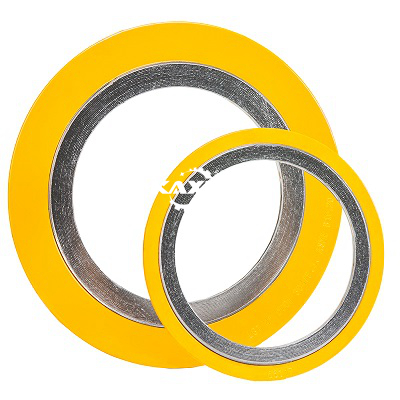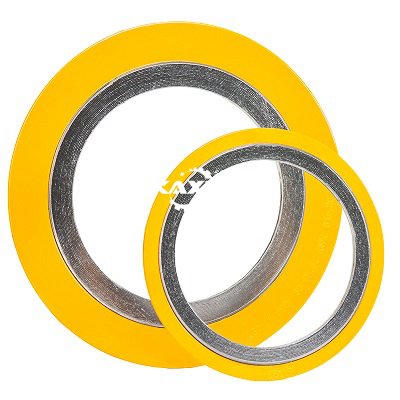Standard Spiral Wound Gasket
A standard spiral wound gasket is a type of sealing gasket commonly used in various industries to provide a reliable and effective seal between two flange surfaces. It is designed to withstand high pressures, temperatures, and a wide range of media, making it suitable for diverse applications.Here a......
Send Inquiry
Product Description
A standard spiral wound gasket is a type of sealing gasket commonly used in various industries to provide a reliable and effective seal between two flange surfaces. It is designed to withstand high pressures, temperatures, and a wide range of media, making it suitable for diverse applications.
Here are some key features and considerations related to standard spiral wound gaskets:
1. Construction: A standard spiral wound gasket consists of a V-shaped metal strip, typically stainless steel or other alloy materials, wound in a spiral configuration. This metal strip is combined with a filler material, such as graphite, PTFE (polytetrafluoroethylene), or other suitable materials. The layers of metal and filler are alternated, creating a robust and resilient gasket structure.
2. Flexibility and Resilience: The spiral wound design allows the gasket to adapt to flange irregularities, providing excellent sealing even in imperfect surfaces. The combination of metal and filler materials provides flexibility, allowing the gasket to withstand thermal expansion and contraction, as well as flange movement under pressure.
3. Pressure and Temperature Resistance: Standard spiral wound gaskets are designed to handle high-pressure and high-temperature applications. The selection of the metal strip and filler material is crucial to ensure compatibility with the specific operating conditions, such as the pressure rating and temperature range.
4. Filler Material Options: The choice of filler material depends on the application requirements and the media being sealed. Graphite is a commonly used filler material due to its excellent chemical resistance and ability to handle high temperatures. PTFE is another popular filler material known for its chemical inertness and low-friction properties.
5. Outer Ring: Some standard spiral wound gaskets may include an outer ring made of solid metal or other materials. The outer ring enhances the gasket's stability and provides additional protection against blowout or overcompression during installation.
6. Size and Compatibility: Standard spiral wound gaskets are available in various sizes and configurations to match the dimensions and specifications of different flange types, including ANSI, API, DIN, and others. It is important to select the gasket size and type that corresponds to the flange dimensions to ensure proper sealing performance.
7. Chemical Compatibility: Consideration should be given to the chemical compatibility of the metal strip, filler material, and the media being sealed. It is essential to choose materials that are resistant to corrosion or degradation caused by the specific media and operating conditions.
Standard spiral wound gaskets offer reliable sealing solutions for a wide range of applications, including oil and gas, chemical processing, power generation, and more. Proper gasket selection, based on factors such as pressure rating, temperature range, media compatibility, and flange specifications, is crucial for achieving an effective and leak-free seal. Following industry standards and guidelines for installation and torque specifications is also important to ensure proper gasket performance.










